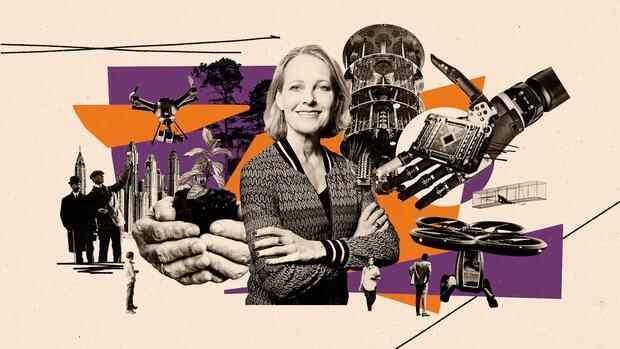As early as August 2020, Musk climbed the big stage on his own to demonstrate how the technology works on pigs. In April 2021, Neuralink released a video showing a monkey playing computer tennis – first with a joystick, then without. The monkey steers the cursor simply with his thoughts via an implanted, wireless chip in his brain. Ping pong becomes brain pong.
This year it should be the human turn. For this, Neuralink needs an experienced doctor who will carry out the clinical trials with the first human subjects and clarify the regulatory issues with the authorities. “You are mission-driven and able to meet tight schedules accurately and efficiently,” the job posting states. That will probably be necessary, because Elon Musk is planning nothing less than the technological revolution of human thinking with Neuralink.
He’s not the only one working on brain-computer interfaces. Several large research groups took up the topic years ago, and some start-ups in the USA sense the big business with the Braincloud of the future. First of all, what many, including Musk, are trying to achieve in this field is medically helpful.
Top jobs of the day
Find the best jobs now and
be notified by email.
Research has long had exciting successes in paving the way back to communicating with the world for people with locked-in syndrome. To put it simply, neuronal signals from the brain can be read out via a brain-computer interface and converted into computer text or computer language. This can be a blessing for people who are cut off from communication with the world and their fellow human beings due to illness.
The question remains: What happens when commercial providers venture into this field? It’s less about alleviating illness-related limitations than about the economic temptations of a next ignition step in the networking of mankind. The world public first became aware when Facebook announced in August 2019 that it was working on a non-invasive mind-reading technology. Here, too, it was said that one wanted to help sick people to be able to communicate differently. In addition, the idea of enabling all users to control their devices by thought is enough.
In the meantime, Facebook is mainly working on setting up the Metaverse as a virtual parallel universe. We will then walk around in it and communicate directly with the world through our thoughts. You could say: This will be the most immersive networking experience that humans have ever had. Or maybe Facebook is turning us into the monkey Neuralink showed us playing brain ping-pong.
It needs ethical and regulatory discussions
A more in-depth analysis of what could one day be possible with such a technology raises radical questions: How can it be ensured that the brain data or even the brain interface cannot be hacked? That not strangers suddenly get access to the most private thing we have: our thinking? Such applications interfere with several basic human rights. We urgently need an ethical and regulatory discussion on how to secure the right to free thought and privacy of thought in the future.
Elon Musk detailed his thoughts on that future when founding Neuralink. He assumes that artificial intelligence will eventually beat us humans in its rapid progress, i.e. be smarter than us humans. If you want to stay in the game and stay on the ball in the competition for thinking about the future, you have to be able to think differently and better.
The brain implant is also intended for this in the future: to combine people’s brains into a brain cloud and enrich it with AI. René Descartes “I think, therefore I am” will then finally become obsolete. Then something thinks in me. Whether that’s me will be a question that others may have to answer. Or that no one can answer.
In this column, Miriam Meckel writes fortnightly about ideas, innovations and interpretations that make progress and a better life possible. Because what the caterpillar calls the end of the world, the rest of the world calls a butterfly. ada-magazin.com
More: The promises of Web 3.0 – In the end it’s all about the money
